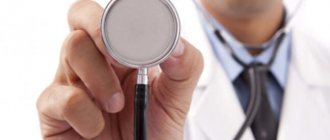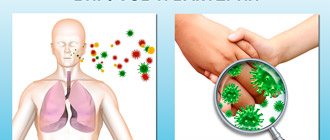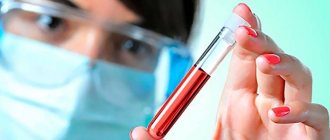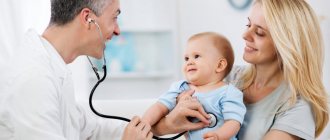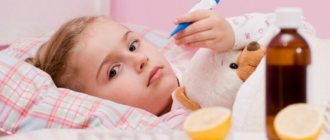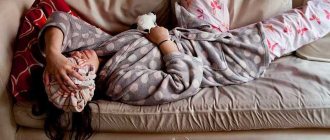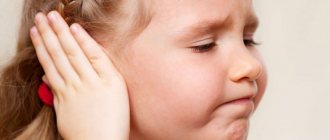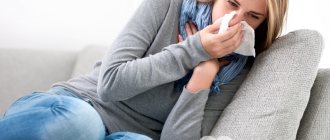Rhinovirus infection is considered one of the most common types of ARVI. Over the course of one year, a person can get sick several times - the immunity developed is very unstable and relates to only one type of virus. In reality, there are more than a hundred of them, and each has a specific antigen.
Seasonality is observed in the spread of pathology. The peak of infection occurs first in September, then in April. This is due to two conditions suitable for the life of the virus: an increase in humidity levels and a decrease in ambient temperature.
Frequent victims are preschool children attending kindergarten and first graders. The infection is common among the elderly, people with chronic pathologies, weakened bodies, and pregnant women. Babies under six months usually have immune protection received from their mother and get sick less often. It is believed that if one person in a team gets sick, the others will become infected in almost 100% of cases.
The severity of rhinovirus infection suggests a mild to moderate form. The classification also depends on how the pathology manifests itself - typically or atypically.
In accordance with ICD-10, rhinovirus disease has code J20.6.
Rhinovirus infection in children
The likelihood of contracting a rhinovirus infection, popularly referred to as a contagious runny nose, is quite high in children of any age category.
In medicine, it is widely believed that children have passive immunity during the first year of life. But older children are at risk, especially those who have weak immunity.
Children who visit areas with large crowds of people, for example, kindergarten, school or additional sections, are more likely than others to catch rhinovirus. If an infected child appears in such places, this automatically leads to the general infection of children who came into contact with him.
The time period after which an infected child begins to infect others varies within seven days. This is the period when he experiences profuse discharge from the nasal cavity.
Transmission of the virus through shared toys cannot be ruled out; however, this is rare because the infection is relatively unstable in the environment.
As practice shows, children are more often infected by airborne droplets when direct contact occurs.
The incubation period of rhinovirus in children, as a rule, lasts no more than three days.
Rhinovirus infection - how to treat to avoid complications?
Rhinovirus infection is a common pathology, manifesting itself with particular force in spring and autumn. More often, the disease occurs in a mild form, but, in practice, there are also complicated types of the disease, aggravated by secondary bacterial damage. It is important to recognize alarming symptoms in time and quickly begin treatment for the pathology.
Rhinovirus infection - what is it?
The term used to identify it will help you understand what this disease is. From Greek “ῥίς rhis” is literally translated as “nose”. The conclusion suggests itself that such infectious agents directly affect the nasal mucosa. All this sheds light on what rhinovirus is. This disease has an epidemic rise in the months of September and April. It is more often diagnosed in countries with cold or temperate climates. Over the course of a year, the same person can suffer from this pathology many times.
Rhinovirus infection - etiology
This disease is provoked by pathogenic agents - representatives of the Picornaviridae family. There are 113 known serological types of this virus. Such agents do not have shells, which is explained by their weak resistance to external factors. The ideal temperature for the reproduction and growth of this pathogenic microorganism ranges from 33°C to 34°C. At 37°C, the malicious agent enters a “dormant” state. Rhinovirus infection will not occur (the pathogen will die) under the influence of disinfectants. Drying and boiling are destructive for such an agent.
Rhinovirus - transmission routes
Distributors of pathogenic agents are carriers of the causative virus and those who have been diagnosed with a pathology provoked by it. People are considered contagious the day before the first symptoms appear and for the next 9-10 days. Human rhinovirus is primarily transmitted through respiratory droplets. It happens that infection occurs when using common household items. However, in practice this rarely happens, because this infectious agent has poor survival in the external environment.
Rhinovirus infection - incubation period
At this stage, the pathogenic agent is in a latent form. This time interval lasts from the moment the pathogen enters the body until clinical signs of pathology appear. More often, rhinovirus has a short incubation period. On average, it lasts 2-4 days
. However, doctors have encountered cases where the incubation period of some patients extended for 10-14 days.
Rhinovirus infection - symptoms
The list of signs that accompany this pathological condition is huge. However, immediately after the introduction of the pathogen, the pathology is asymptomatic. During the incubation period, the infectious agent only adapts to the characteristics of the organism into which it has entered and becomes established in it. It is after this that the first alarm bells appear. Rhinovirus symptoms are:
- inflammation of the nasal mucosa;
- sneezing;
- chills;
- redness of the eyes and severe watery eyes;
- sore throat;
- increase in temperature (first to 37.2°, and then to 38.5°);
- prostration;
- pale skin;
- Secretions are abundantly separated and removed from the nasal cavity.
Rhinovirus infection - diagnosis
During the examination of the patient, the doctor makes a preliminary diagnosis. At the same time, he will take into account the complaints of the person who contacts him and the symptoms that appear. In practice, in most cases this is what the diagnosis is limited to. However, some specialists play it safe and send the patient for laboratory tests. Such manipulations help to identify the type of inflammation during rhinovirus infection and correctly prescribe treatment.
The following diagnostic tests are most often prescribed:
- Virological method.
Its essence is that biological material is taken from the nasopharynx and the pathogen attacking the body is identified. This method is acceptable only in the first five days after the first symptoms appear. At a late stage of disease development, the number of viral agents decreases significantly, so the result obtained may not be informative. - Serological method.
Involves identifying the antigen-antibody complex. In such a case, the biological material is the patient's blood. - Polymerase chain reaction method.
This study helps to identify the fact of introduction into the body of an infectious agent that causes rhinovirus disease. - General blood analysis.
Its results show an increase in ESR (they may be at the upper acceptable limit or exceed these values). Such indicators indicate an inflammatory process. - Urine examination, during which the presence of leukocytes and proteins in biological material is detected.
This analysis indicates complications from the genitourinary system.
Rhinovirus infection - treatment
Only a doctor can say which therapy is most effective. In this case, treatment of rhinovirus is carried out in each specific case according to an individually developed scheme. When prescribing therapy, the doctor will definitely take into account the age of the patient who contacted him and his existing concomitant pathologies. Self-medication is dangerous! It can lead to serious consequences.
If rhinovirus is diagnosed, treatment is aimed at destroying the infectious agents and alleviating the condition. Complex therapy is considered more effective. It involves the prescription of etiotropic drugs. Medicines in this group actively fight viruses: they suppress their growth and prevent their reproduction. The following etiotropic drugs are most often prescribed:
- Arbidol;
- Ribavirin;
- Midantan;
- Nomides.
To lubricate the nasal mucosa, Lokferon or Bonafton are prescribed. In addition, antiviral intranasal agents, for example, Oxolinic ointment, can be used. At the same time, to activate the body’s defenses, the following immunomodulators are prescribed:
- Interferon;
- Grippferon;
- Cycloferon;
- Anaferon.
If the temperature rapidly rises to 38.5°, the following antipyretic drugs will come to the rescue:
- Aspirin;
- Nurofen;
- Ibuprofen;
- Paracetamol.
If a rhinovirus infection has spread to the larynx and coughing attacks are overcome, the following medications can be used in treatment:
- Sinecode;
- Stoptussin;
- Tusuprex.
When a rhinovirus infection affects the lower respiratory tract, the following drugs are prescribed:
- Lazolvan;
- ACC;
- Ambroxol.
Rhinovirus infection - clinical recommendations
To speed up the healing process, it is important to strictly follow the doctor’s recommendations. Such instructions apply to both the treatment regimen and the regimen. How to treat rhinovirus:
- Maintain bed rest.
- Ventilate the room more often.
- Carry out a thorough wet cleaning of the room.
- Provide plenty of fluids (teas, infusions, fruit drinks, juices).
- Enrich your diet with foods rich in vitamin C.
Rhinovirus - nasal drops
When fighting pathology, various groups of drugs can be used. One of them is immunostimulating agents. How to treat rhinovirus in this case:
- Thymogen;
- Interferon;
- Grippferon;
- Derinat;
- IRS-19.
With this disease, breathing is difficult, so the following vasoconstrictor drops are prescribed for treatment:
- Tizin;
- Xylene;
- Nazol;
- Sanorin;
- For nose;
- Nazivin;
- Farial.
Rhinovirus - complications
Negative consequences arise if the situation is left to chance or the treatment regimen is chosen incorrectly. In this case, a bacterial infection is attached to the virus. Complications of rhinovirus infection can be:
- bronchitis;
- sinusitis;
- pneumonia;
- angina;
- chronic rhinitis;
- sinusitis;
- otitis.
Rhinovirus infection - prevention
To date, there are no specific measures that could completely protect against infection. Every year the virus mutates, acquiring new modifications. For this reason, it is difficult to predict how an infectious agent will behave. However, there are a number of simple but effective recommendations, following which acute rhinovirus infection will not be terrible. Preventive measures are as follows:
- During periods of increased incidence, it is advisable to avoid crowded places. If, due to certain circumstances, this is not possible, you should visit public institutions wearing a special protective mask.
- After each time you go outside, you should rinse your nose with a solution of sea salt or other compositions containing herbal ingredients.
- When an epidemic begins (ARVI attacks, rhinovirus infection), you need to strengthen the body. Vitamin and mineral complexes, hardening and an active lifestyle will help with this.
- If one of the family members gets sick, he needs to be isolated. For the rest, it is important to follow the rules of hygiene.
Causes of the disease
A person suffering from rhinovirus is also a carrier of the infection. The upper respiratory tract and conjunctiva are where the virus enters the body.
Main routes of infection:
- Airborne . When a sick person sneezes, blows his nose or coughs, he creates a risk of infection for other people. Rhinoviruses released into the air are inhaled by healthy people, which leads to illness.
- Contact and household . Rhinovirus infection enters the human body after contact with things on the surface of which there were organic secretions of the patient. If, after contact with such objects, a person touches the mucous membranes, the likelihood of infection increases many times over.
Factors that increase the risk of contracting rhinovirus infection:
- Age . According to statistics, rhinovirus infection is more often diagnosed in older people and children. It must be said that infants are practically not susceptible to rhinovirus. This is explained by the fact that when they receive mother’s milk, they acquire antibodies to the infection along with it.
- Tobacco smoking . Cigarette lovers are prone to infection, so men often notice symptoms of rhinovirus infection.
- Crowd of people . You can catch the virus in any public place, be it a bus or a store.
The following factors play an important role in the development of infection:
- Contacts with infected people
- Decreased protective functions of the body
- For women - breastfeeding period
- Exacerbation of existing chronic diseases
- Cold season
- Prolonged stay outdoors at low temperatures
Rhinovirus symptoms
After entering the body, rhinovirus infection begins to manifest itself in about two to three days . During this time, an inflammatory reaction is formed in the nasal mucosa. As soon as the incubation period comes to an end, catarrhal changes appear, which means a transition to the initial stage of the prodromal period. The patient complains of the following symptoms :
- Constant low-grade fever
- Mild fever
- Aches in muscles, joints and bones
- Swelling in the area of the nasal mucosa
- Nasal congestion and breathing problems
- Large volume of mucous secreted from the nose
Some time after infection with the virus, the exudate released from the nose acquires a thick consistency. Severe intoxication begins to fade.
A few hours after infection, you may experience a sore throat, sneezing, and difficulty breathing through your nose. These processes occur against the background of hyperemia . At the same time, the tissues of the wings of the nose begin to redden and peel. Redness spreads to small vessels of the conjunctiva and sclera. The smallest vessels of the eyeball become noticeable, and lacrimation appears.
Symptoms
The incubation period for rhinovirus infection lasts about five days. In children it is usually no more than three days.
On the first day, rhinovirus pathology manifests itself most acutely. The temperature rises to 37.5°C. In young children it may be slightly higher. Characteristic symptoms of intoxication are noted: drowsiness, weakness, muscle pain, aching bones, loss of appetite, tearfulness, moodiness. Patients become irritable. In adults, rhinovirus disease can occur without fever.
Read: Why infectious dermatitis occurs in children: clinical picture, diagnosis and treatment
Symptoms of rhinovirus infection include:
- Runny nose. The pathology is accompanied by a profuse runny nose. At the beginning of the disease, it is watery in nature, has no color, later it becomes thicker, does not drain well, and acquires a greenish and yellowish tint.
- Changes in the nose. There is redness, swelling of the mucous membrane, loss of the ability to sense and identify smells, and perceive sounds. Congestion leads to another characteristic symptom of rhinovirus disease - mouth breathing.
- Sneezing. Due to nasal irritation, the patient often sneezes.
- Voice change. Swelling of the nose and blockage of the nasal passages, a severe runny nose makes the patient's voice nasal.
- Increased size of lymph nodes. This is a fairly rare occurrence with rhinovirus infection. It is more often observed in children and goes away quickly.
- Conjunctivitis. In many cases, the virus gets into the eyes and causes inflammation. Characteristic signs include redness of the eyes, lacrimation, and photophobia. Possible discharge of pus.
- Unpleasant sensation in the throat. There is a sore sensation, it seems as if everything inside is itching. Sometimes there is swelling and redness of the tonsils. Due to the flow of nasal secretions down the back wall of the larynx, a cough appears.
- Skin change. The face becomes pale, in some cases acquiring a grayish tint. At the same time, the skin on the wings of the nose turns red and begins to peel a little later. Characteristic color changes and subsequent violations of the integrity of the skin are associated with frequent contact with napkins and scarves. The face begins to look slightly puffy and swollen. There is swelling of the eyelids.
- Impaired sense of taste. Due to damage and swelling of the oral cavity, patients do not feel taste, or it is distorted.
The clinic may include other symptoms, for example, increased sweating when the temperature drops, the appearance of shortness of breath, but they appear less frequently and are individual in nature.
The duration of symptoms is from 5 to 10 days.
Diagnosis of rhinovirus infection
To make a diagnosis, the otolaryngologist needs to listen to the patient's complaints , collect an epidemiological history and visually examine the nasopharyngeal area.
Making an accurate diagnosis becomes possible after carrying out modern diagnostic tests:
- Serological diagnosis. Virus recognition using a neutralization reaction. A laboratory assistant studies the interaction of the patient's serum and the corresponding foreign protein or antigen virus. Serodiagnosis also makes it possible to determine the type of infectious agent isolated from a patient during a reaction between the virus and immune serum.
- Virological research. Microbiological examination of organic material secreted from the nose. The material is collected in the first three days of illness.
- Express diagnostics. A specialist performs a polymerase reaction in a laboratory setting, which makes it possible to identify rhinovirus in discharge from the upper respiratory tract.
There is simply no specific prevention against rhinovirus, since new serotypes of rhinovirus infection are being formed .
Diagnostic methods
Any diagnostic measures begin with collecting an anamnesis (medical history). Then the doctor examines the patient using rhinoscopy or endoscopy and clarifies the symptoms. It is at this stage that differential diagnosis occurs. With its help, the otolaryngologist “sorts” the signs that appear and makes the only correct diagnosis.
At the end of the examination, the patient is prescribed a number of instrumental studies to confirm the conclusions made:
- Ultrasound;
- radiography;
- fiberoscopy;
- MRI;
- computed tomography.
If necessary, a puncture of the maxillary sinuses is performed. The types of studies performed and their order are determined by the otolaryngologist.
Treatment of rhinovirus infection in children and adults
Rhinovirus infection does not pose a serious threat to human health and recedes relatively quickly. A set of therapeutic measures is primarily aimed at alleviating the patient’s condition and preventing further spread of the virus.
A sick child must be provided with rest . To avoid dehydration and intoxication, you should monitor your drinking regime. Drinking plenty of fluids and antiviral medications can help alleviate the painful condition. The room should have a comfortable temperature and optimal humidity level. These measures will allow the irritated nasopharynx not to make breathing difficult. Sick adults should give up alcohol and cigarettes during their illness, and children should be protected from tobacco smoke in every possible way.
It is impossible to cope with rhinovirus using only one specific drug. Only an integrated approach to the treatment of this disease will allow the patient to get back on his feet in a short time.
The symptoms of rhinovirus infection are very similar to the notorious acute respiratory infection, so doctors most often prescribe broad-spectrum antiviral drugs. It is advisable to use a narrow-spectrum drug only after confirmation of the diagnosis. For almost any lesion of the upper respiratory tract, be it enterovirus or influenza , a similar treatment regimen is used.
1. Taking antiviral drugs.
- Arbidol . The action of the drug is to inhibit the penetration of the virus into epithelial cells. Admission is allowed for children from two years of age. Up to the age of seven, 2 tablets per day are prescribed; children from seven to twelve years of age are allowed 4 tablets per day. Adults are prescribed a dose of up to 8 tablets per day. The duration of treatment is no more than a week.
- Isoprinosine . The daily dose (50 mg/kg) is divided into several doses. Take the drug for at least five to seven days.
- Oxaline ointment . Being a local drug, it significantly reduces the activity of the virus. The ointment is administered intranasally.
- Ribavirin . Allowed for children over ten years of age. Dosage - 15 mg/kg. The treatment course is seven days.
2. The use of immunomodulatory drugs that prevent viruses from multiplying and stimulate the body's immune response.
- Interferon. You should take 5 drops every 30 minutes for three hours. Subsequently, the dosage is reduced to five doses per day. The course lasts one week.
- Viferon. Rectal suppositories are placed twice a day.
3. Taking immunostimulants.
- Cycloferon. From the age of five, one tablet per day is allowed, from seven to twelve years, 2 tablets. Adults are prescribed 3 tablets per day.
- Anaferon. Even the smallest children are allowed. On the first day, take 4 tablets, and then reduce the dose to one. The course of treatment is a week.
4. Relief of symptoms of rhinovirus infection.
- To eliminate high fever, Nurofen or paracetamol are prescribed.
- Cough medications are selected taking into account its nature and location.
- To facilitate breathing, the nasopharynx is washed with special hypertonic solutions. You can use well-proven Aquamaris or Humer.
- To relieve swelling, use Pinosol or Xylene drops.
Treatment
How to treat a nose infection? First of all, the patient is prescribed medications that can destroy the causative agent of the disease: bacteria, virus or fungus.
For a microbial infection, the attending physician prescribes penicillin or cephalosporin antibiotics: Amoxicillin, Augmentin, Amoxiclav, Ceftriaxone. To combat viruses, Arbidol, Remantadine, Interferon, Kagocel or Anaferon are prescribed. If the disease is fungal in nature, treatment is carried out with mycotics: Fluconazole, Nystatin, Terbinafine, Levorin.
To alleviate the patient’s condition and eliminate the obvious manifestations of the disease, symptomatic therapy is used:
- vasoconstrictors - Sanorin, Nazol, Oxymetazoline, Tizin. Drugs in this group eliminate nasal congestion, relieve swelling of the mucous membrane and prepare it for the effects of local agents;
- antibacterial and anti-inflammatory sprays - Protargol, Isofra;
- antihistamines - Suprastin, Claritin, Erius, Diazolin;
- moisturizing aerosols - Pinosol, Kameton.
Treatment of bacterial infection is carried out using additional groups of drugs:
- antipyretics - Nurofen or Nise;
- antimicrobial nasal drops - Collargol, Protargol;
- probiotics for internal use - Trilact, Lactobacterin, Ecoflor.
Antiseptics (Miramistin, Chlorhexidine) and saline solutions (Aquamaris, Dolphin, Morenazal) are used to wash the mucous membrane.
After the acute stage, physiotherapeutic treatment is prescribed to combat the disease: ultraviolet irradiation, ultraviolet irradiation, exposure to currents. The procedures stimulate local immunity, improve blood circulation and restore tissue.
Traditional medicine in the fight against rhinovirus infection
- Take peppermint, black elderberry flowers, yarrow inflorescences in equal proportions (one tablespoon) and pour the mixture with a glass of hot water. Leave for 5-10 minutes, then strain. Take the infusion warm, one glass before bedtime.
- Two tablespoons of oregano are poured with boiling water and left in a thermos for about two hours. The resulting infusion is drunk up to four times a day, half a glass before meals.
- Mix 250 ml of plantain juice and 200 g of honey. The mixture is kept on low heat for about half an hour. Take warm, one tablespoon before meals.
- Cucumber juice (half a glass) and a teaspoon of honey. The resulting mixture is consumed half a glass twice a day.
- It is necessary to cook the beets until soft. Then the vegetable pulp is passed through a meat grinder or grated. After this, the crushed product is squeezed through gauze. Lubricate the nasal cavity with beetroot juice twice a day.
- Dry crushed wild rosemary (one teaspoon) is poured with half a glass of sunflower oil. Next, the mixture is kept in a water bath for an hour, then infused until cooled. The strained mixture is instilled into the nostrils three times a day.
Prevention measures
By adhering to certain preventive measures, you can significantly reduce the risk of disease both in yourself and in your child:
- During an outbreak of respiratory diseases, you should be in places where many people gather as little as possible.
- Monitor hand hygiene, wash them often and treat them with antiseptic solutions.
- Use saline solutions to cleanse the mucous membrane of the sinuses.
- Do not forget to ventilate the living space and carry out sanitary cleaning with disinfectants.
- To keep your immune system in good shape, you need to take vitamin complexes regularly.
- It is useful to harden a child, but with extreme caution.
- Avoid hypothermia of the body.
- If contact with a sick person is unavoidable, you should wear a respirator mask.
By following these simple recommendations, adults protect themselves and their children not only from a banal rhinovirus infection, but also from its complications in the form of sinusitis, tonsillitis and otitis media.

